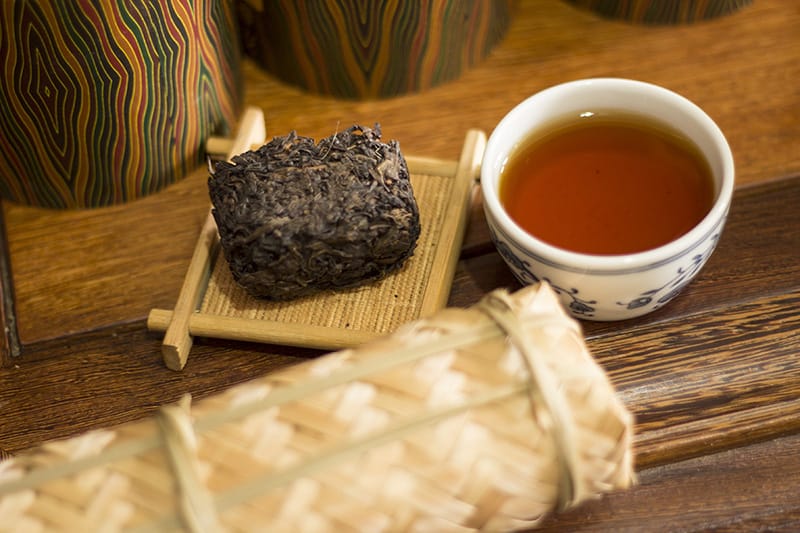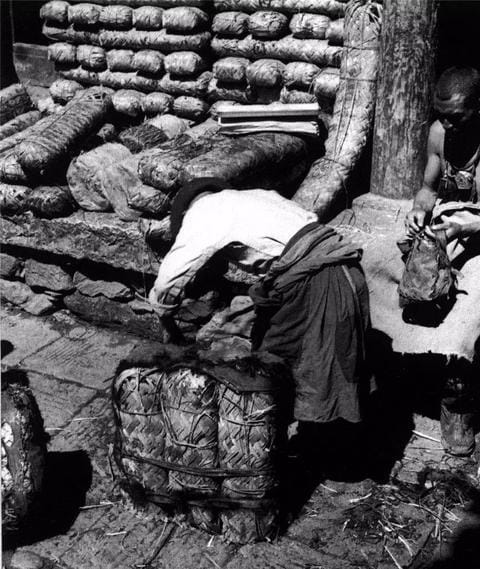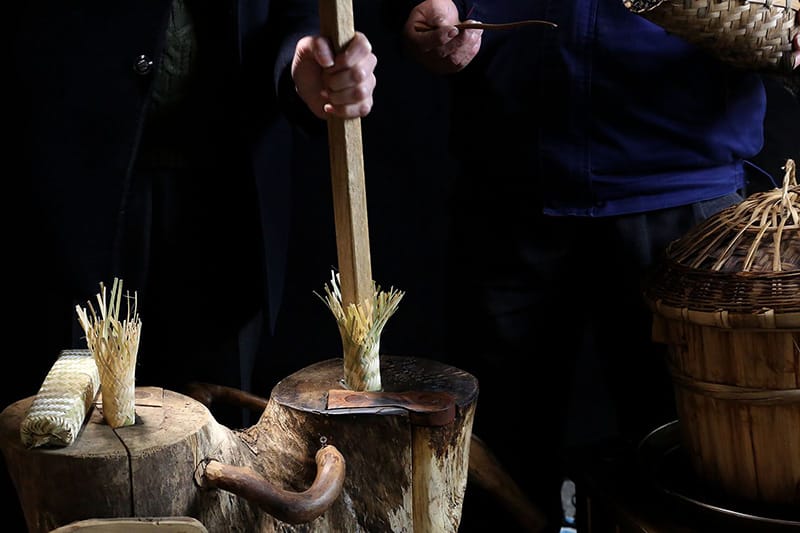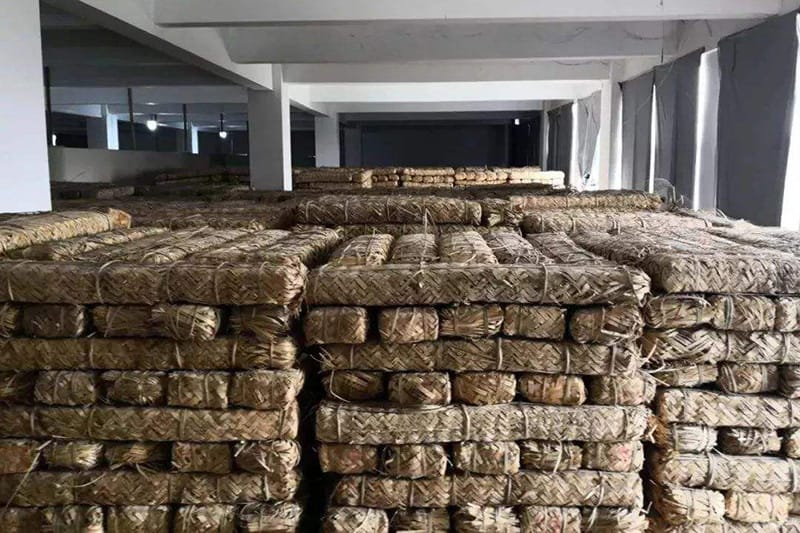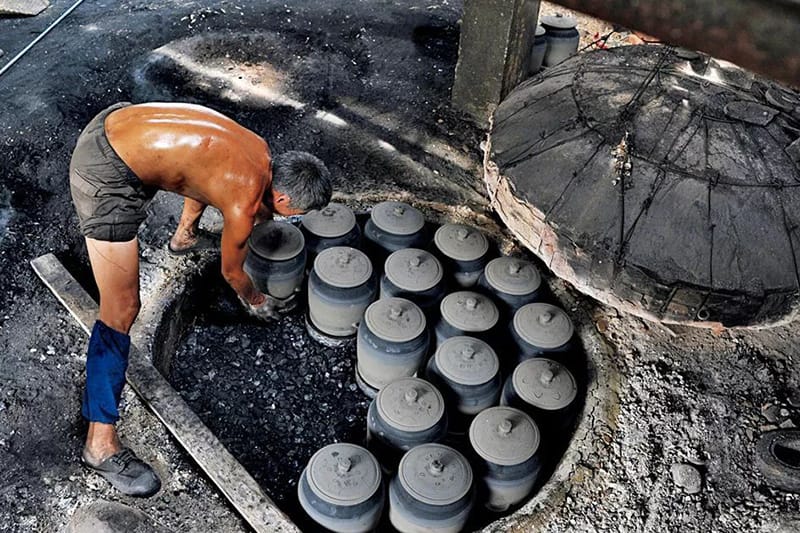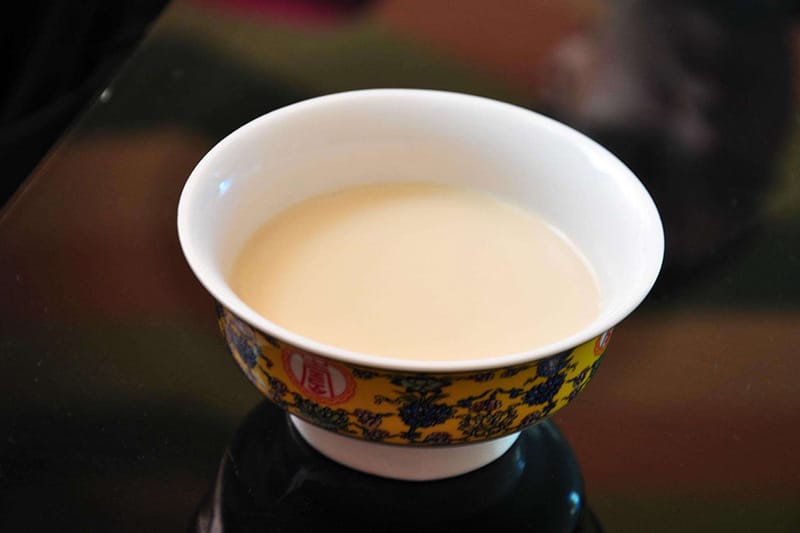Last Updated on 12/21/2020 by Desmond
Tibet is a province of China, also an important node of the Ancient Tea Horse Road. It is said that in a political marriage in the Tang Dynasty, Princess Wencheng brought three kinds of stuff to Tibet, tea, silk, and ink stationery. Among them, tea is the most popular. It indirectly led to developing the tea-horse trading and created a unique Tibetan Tea(Zang Cha) culture.
CONTENT
What Is Tibetan Tea
Tibet’s natural environment is not suitable for planting tea trees and harsh to people living, so no tea produces there. The Tibetan tea we talk about refers to the dark tea originated in Yaan, Sichuan, and is primarily provided for Tibetan consumption.
Compare with ordinary teas, Tibetan tea lack of advantage in the flavor. But to the culture, politics, and economics, it contributes a lot.
History
Whether Princess Wencheng is the first one who brought tea to Tibet is not sure. Tea indeed becomes popular in Tibet from the Tang Dynasty.
Tibetan is nomad, take high fat and high heat food such as beef, mutton, and milk as the daily diet, lacks fruits and vegetables. Plus, Tibet is located on a plateau, and water got a low boil-point here; food is hard to turn soft by cooking. Tea solved Tibetan digestive problems and became their daily beverage.
Tibet Plateau doesn’t produce tea; all the tea here is imported from China inland. People exchanged Tibetans horses and sheep with tea, and they called it Tea-horse Trading. A fixed trading route formation gradually, which is the famous Ancient Tea Horse Road. One route starts from Sichuan, via Tibet, to the southwest Asia countries like Bhutan, India, and Nepal. Chinese tea culture also spread abroad.
Tibet has been in a slave society stage until New China was founded. For a long time in Tibet, materials were scarce, and there was no uniform currency.
Tea is essential to Tibetan life, and due to it is dark tea and suitable for a long-time store, ever used as a substitute for currency. Tibetan tea was packaged with bamboo cane containers in a fixed specification, convenient for exchange other goods. Most of the life necessities got a definite isovalent Tibetan tea amount.
Except for the contributions to economics and cultural spreading, tea also played as a political means.
Tibet belongs to a remote area of China. In ancient times, for consolidating the rule and prevent the rebellion by the local tribe. The government, except steadily providing tea to Tibetan for daily life, also exchange their battle steed and weapon with tea to control their military capability.
At the end of the 19th century, to improve the Indian tea industry, the British government tried to replace the Tibetan tea market share with Indian tea to achieve political and economic purposes. They sent a spy named JAS. Hutchison to Yaan, Sichuan, tried to make clear the whole process of Tibetan tea produce.
JAS. Hutchison completed the mission in 1905 and composed a report, “Indian Brick Tea for Tibet: report on a mission to Sichuan” to the British government. The report described the Tibetan tea processing detailedly and suggested let India produce brick or export black tea to Tibet.
However, because of the other historical reasons, this action’s primary purposes had not been achieved.
Origin
Yaan, Sichuan always the primary origin area of Tibetan tea.
Sep 26th, 2000, Sichuan Ya’an Tea Factory Limited (Group) Company rename the South Road Bian Cha, which provides to Tibet all the time, as Tibetan Tea, and unified the leaves source choosing and processing methods. Before that, Tibetan tea used to be called Border-selling tea all the time. (tea which specially sells to the border area)
Sichuan is one of the starting points of the Ancient Tea Horse Road, or it can be said as the only channel between China inland and Tibet.
In ancient times, the Chinese government set a special department there called Tea-horse Department to manage the related business about the tea trade. Except for the leaves produced in the local Mengding Mountain, Sichuan also purchased rough tea from other places to make into dark tea and compressed it into brick tea to sell to Tibet.
At that time, these border-selling teas were typically made from low-quality leaves with lots of stems. That left a bad impression on people about Tibetan tea. However, rough tea stems contain richer fiber and can help the Tibetan digestive problems better. Besides, due to the low water boil-point, Tibetan tea must be brewed by long-time cooking; a large number of stems can bring more flavor.
Related Reading: Do Not Disdain The Tea Stem; Its Value Is Better Than You Think.
Processing
Although Tibetan tea was not considered a good tea in the past, the processing is still complicated and over dozens of steps. Most of the steps are similar to other dark teas; among them, picking and pestling got their own feature.
The source leaves of Tibetan tea are from the small-leaf tea trees. The picking standard is one bud to the fifth leaf. They must have been grown over six months; they are old leaves, different from the green tea, which took the tenderest.
Traditionally, tea masters will use a special knife to cut down the whole branch because too many leaves need to pick. So Tibetan tea is also called Daozi(knife) Tea.
After picking, leaves will be fixing, rolling, piling, withering, and screening such steps. Some of the steps will repeat times till the leaves are deeply fermented. According to the repeat times of the processing and the quality, these leaves will be classified into different grades, waiting for further processing. The source leaves of Tibetan tea, typically in three grades:
- Kang Tip;
- Golden Tip;
- Kang Brick;
After all these, the tea masters will put the fermented leaves in a sack for steaming, make them soft again.
Tibetan tea’s compressing way is different from other dark teas like Pu-erh. Tea masters will weave a unique container with bamboo canes, put the leaves after steaming in, and compress them by a continuous pestling hit. Several bamboo slices will separate the leaves into bricks in the long-strip container, every 500g for one brick and 20 bricks for one package.
These strips of teas will be placed in the warehouse for about a month. Later, open the package, and use a special paper for packaging every tea brick. Then put them into the strip bamboo container again for transport and sale.
Black Sand Teaware
When we talk about Tibetan tea, we should not miss the Yingjing Black Sand Teawares. In the Chinese tea lovers’ opinion, there is a saying “Purple Sand in Yixing the east, Black Sand in Yingxing the west,” which means they are all best.
Yingxing is a prefecture in Yaan, Sichuan. The history of making pottery is over 2000 years and gradually developed the unique black sand ceramic. The source is from a kind of local kaolin; due to mixing some coal ash during firing, the ceramic got a distinctive black and glossy look.
The black sand teawares got a better air permeability than the purple sand ones; the air in the pores can make excellent heat preservation. When brewing deep-fermentation tea like Tibetan tea, it can help extract the flavor better and prevent aroma loss.
How To Brew Tibetan Tea
Regular Way
- Prepare the teawares, and pre-heat them;
- Pry moderate leaves from the brick, typically 5-6g, according to your taste and how many people will drink;
- Put the leaves into a Gaiwan, add hot water over 95℃, steep for 5 seconds, then pour out the wastewater;
- Fill in hot water again, steep for about 1 min;
- Pour the infusion into a fair cup to equal the concentration;
- Serving;
Tradition Way
Tibetan tea stays at an exalted position in Tibetan life. Except for serving guests and daily drinking, the Tibetan monks also use it to serve their god. Not just brewing, but make them into Tibetan butter tea, a unique local beverage. To make authentic Tibetan butter tea needs some special tools and the local yak milk, but we can take a simple imitate.
Related Reading: Tibetan Butter Tea, A Bulletproof Beverage With 1000 Years History.
- Pry moderate leaves from the brick, put them in an iron teapot, cooking for 10 mins, till the infusion dark;
- Filter the leaves out, and pour the infusion into a pot;
- Add some butter in, stir for 3 mins or longer, make them mixing intensive;
- Heating, add some salt and milk in after boiling, then stir for about 30 seconds;
- Scoop up the butter tea in a bowl and enjoy;
Reference
JAS. HUTCHISON. INDIAN BRICK TEA FOR TIBET REPORT ON A MISSION TO SSU-CHUAN
Zhao Guodong. Tibetan Tea Trip
